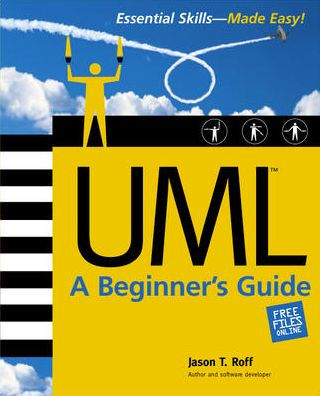5
1
9780072224603



Uml: A Beginner's Guide / Edition 1 available in Paperback, eBook

Uml: A Beginner's Guide / Edition 1
- ISBN-10:
- 0072224606
- ISBN-13:
- 9780072224603
- Pub. Date:
- 12/19/2002
- Publisher:
- Osborne

Uml: A Beginner's Guide / Edition 1
$42.0
Current price is , Original price is $42.0. You
42.0
In Stock

Product Details
| ISBN-13: | 9780072224603 |
|---|---|
| Publisher: | Osborne |
| Publication date: | 12/19/2002 |
| Series: | Beginner's Guide |
| Pages: | 336 |
| Product dimensions: | 7.50(w) x 9.20(h) x 0.90(d) |
About the Author
From the B&N Reads Blog

